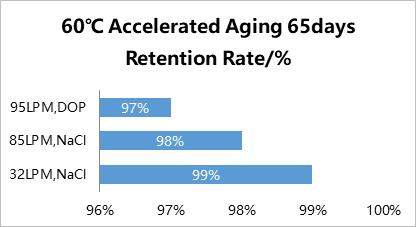Brief introduction
Melt-blown fabric is the core material of face masks, made of polypropylene, and its fiber diameter can reach 1-5 microns. Its unique wick structure of the ultra-fine fibers can increase the number and surface areas of fiber per unit, which enables the fabrics possess the properties of superb filtering, shielding, thermal-insulating and oil-absorbing.
Melt-blown non-woven technology originated in 1950s, initiated by the US Naval Research laboratories, and was popularized and applied in China in 1990s. It was not until 2020 when it was affected by COVID-19 pandemic that the amount of melt-blown fabrics skyrocketed.
Productive process
The whole set of melt-blown equipment consists of main machine, systems of heating, lubricating, hydraulic, cooling and electrical control. High speed hot air flow is used to pull the thin flow of polymer melt extruded from die head spinneret hole, so as to form the ultra-fine fibers and collect them on netting devices, and bonding themselves with heats to become melt-blown non-woven fabrics.
The process of melt-blown production is:
1. Preparation of melt
2. Filtering
3. Measuring
4. Melt extruding from the spinneret
5. Pulling and cooling of melt flow
6. Wet formation
7. Electret process
8. Trimming and rolling
Two types of melt-blown fabric
According to different melt-blown electret methods, melt-blown fabric is divided into water tribocharging fabric and electric electret fabric. The water tribocharging melt-blown cloth is charged with ultra-pure water by high-speed friction electret technology, forming a cloth with high efficiency and low respiratory resistance. It is usually used in the production of FPP2, FPP3 of European standards and Level 3 of American standards of face masks, etc. Electric electret melt-blown fabric is charged by the electret technology of corona discharge and it is usually used in medical surgical, KN95 and medical protective face masks, etc.
Main properties
There are three main properties of melt-blown cloth. First is filtration efficiency, that is, the ability of face masks to filter out target pollutants. Further filtration efficiency is divided into Particle Filtration Efficiency(PFE) and Bacteria Filtration Efficiency(BFE). In general, PFE of melt-blown fabric reached 90% can filter out most bacteria.
The second property is ventilation resistance, representing the degree of breathability of melt-blown cloth. High-efficiency and Low-resistance is a contradiction, and a good mask should realize it.
The last property is resistance to charge attenuation, which is the aging of melt-blown fabric. According to accelerated test condition of ASTM F1980-16(60 degrees Celsius and 70% humidity), melt-blown non-woven fabric produced by KINGFA still maintains a filtration efficiency higher than 99% after 9 weeks of aging and it could be stored for more than 3 years.

Recommended Storage Conditions for Kingfa melt-blown fabric: 20~25℃, within 50% RH, sealed and protected from light.




